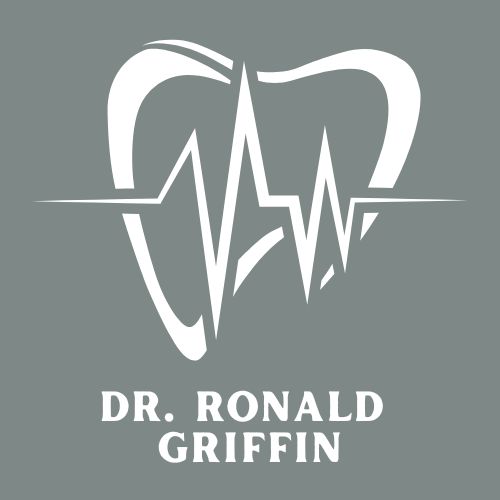About Dr. Ronald Griffin
Dr. Ronald Griffin is a dentist, military veteran, and dedicated professional based in Chillicothe, Ohio. He has more than twenty-three years of experience in the field and a passion for helping others. Dr. Griffin’s specialty is Pediatric Dentistry and Sports Dentistry. He is well-known for providing custom mouthguards, among other services.
Over the years, Dr. Ronald Griffin has attended to thousands of patients, ranging from pediatric patients to infant care and special-needs adults. His treatment plans vary from conventional dental care to full-mouth rehab cases, depending on the needs of those under his care. Dr. Griffin’s care is unparalleled, especially regarding diagnosis, patient acclimation, restorative dentistry, and oral surgical care.
Currently, Dr. Ronald Griffin is the Owner and Lead Doctor at Ronald A. Griffin, DDS, LLC. He opened the business in 2006, and it has been thriving ever since. In the sixteen (plus) years since he opened the doors, Dr. Griffin has performed over 120,000 patient visits. Dr. Griffin often balanced two roles – working as a solo doctor and working in tandem with an associate dentist. This gave him plenty of experience on both sides, perfecting his teamwork and decision-making skills – among other concerns. As a dental surgeon, Dr. Ronald Griffin has maintained an appointment with the local medical center (Adena Regional Medical Center in Chillicothe, Ohio) as a non-partnered physician in good standing.
Before opening the doors to his own practice, Dr. Ronald Griffin had to earn some professional experience. He worked as an Associate Dentist at Timothy G. Nusbaum, DDS, Inc. He worked here for six years. It was his first (and only) associate position out of residency. It’s worth noting that Dr. Griffin would eventually purchase this practice and turn it into the organization he runs today. During this time, Dr. Griffin performed conventional dentistry procedures, oral conscious sedation, and general anesthesia cases.
However, before Dr. Ronald Griffin could step into any of these dentistry roles, he first had to obtain an education. He started by earning a degree through the University of Cincinnati. This degree was in Biological Sciences. Following this, Dr. Ronald Griffin attended the Ohio State University College of Dentistry. This was a four-year DDS program, and Dr. Griffin graduated in the top third of his class. With this foundation in place, it was time to find a residency program. Dr. Griffin went with General Practice Residency at the Medical College Hospital in Toledo, Ohio. This led to his second and final residency in Pediatric Dental. He worked with the Children’s Hospital of Pittsburgh for two years to achieve this goal.
Some would be interested to learn that Dr. Ronald Griffin put himself through college. His education and dentistry career followed a career in the US Army. He was a member of the 24th Infantry Unit and is proud of where he came from.
Outside of work, Dr. Ronald Griffin has many hobbies and interests. Some of his favorites include sports and travel. To learn more about Dr. Ronald Griffin, his professional life, and his interests, visit DrRonaldGriffin.net and DrRonaldGriffin.org.

Recent Blogs
Sports in Pop Culture: How Movies, TV Shows, and Music Celebrate the Athletic Spirit
Sports have always held a special place in popular culture, captivating audiences with tales of triumph, defeat, and the human spirit. From iconic sports movies to memorable TV shows and anthemic sports-themed music, the influence of athletics extends far beyond the field, court, or arena.
Dental Technology Innovations: Advancements That Are Changing the Future of Dentistry
The field of dentistry is constantly evolving, driven by technological advancements that are transforming patient care, treatment outcomes, and practice workflows. From diagnostic tools and treatment modalities to practice management systems and patient engagement platforms, dental technology innovations are revolutionizing every aspect of the dental industry. In this blog post, we’ll explore some of the most exciting dental technology innovations that are shaping the future of dentistry.
1. Digital Imaging and Diagnostic Tools
Digital imaging technologies such as intraoral scanners, cone beam computed tomography (CBCT), and digital radiography have revolutionized the way dentists diagnose and treat dental conditions. These technologies provide high-resolution, 3D images of the oral cavity, allowing dentists to visualize dental anatomy, identify abnormalities, and plan treatment with unparalleled precision and accuracy.
Intraoral scanners eliminate the need for messy impression materials, enabling dentists to capture digital impressions quickly and comfortably. CBCT imaging offers detailed views of dental structures, facilitating comprehensive treatment planning for procedures such as implant placement, endodontic therapy, and orthodontic treatment. Digital radiography reduces radiation exposure, enhances image quality, and enables instant image viewing and sharing for improved collaboration and communication.
2. CAD/CAM Technology
Computer-aided design and computer-aided manufacturing (CAD/CAM) technology have revolutionized restorative dentistry by enabling the fabrication of high-quality dental restorations in a single visit. CAD/CAM systems use digital impressions and computer software to design and mill restorations such as crowns, bridges, veneers, and implant restorations with exceptional precision and aesthetics.
CAD/CAM technology streamlines the restorative process, eliminating the need for temporary restorations, multiple appointments, and manual adjustments. Patients benefit from faster treatment times, improved accuracy, and natural-looking restorations that blend seamlessly with their natural dentition. Dentists enjoy increased productivity, enhanced treatment outcomes, and greater patient satisfaction with CAD/CAM technology.
3. Teledentistry and Remote Patient Monitoring
Teledentistry and remote patient monitoring technologies leverage telecommunication and digital health platforms to enable virtual consultations, remote diagnosis, and patient monitoring. These technologies enable dentists to connect with patients in real-time, provide personalized care remotely, and monitor treatment progress outside of the traditional dental office setting.
Teledentistry platforms allow patients to consult with dentists from the comfort of their homes, reducing barriers to access and improving convenience for patients with limited mobility, transportation challenges, or geographical constraints. Remote patient monitoring solutions enable dentists to track patient compliance, monitor oral health metrics, and intervene early to prevent or address dental issues before they escalate.
4. Practice Management Software and Patient Engagement Platforms
Practice management software and patient engagement platforms streamline administrative tasks, enhance communication, and improve patient engagement for dental practices. These technologies automate scheduling, billing, and record-keeping processes, freeing up valuable time for dentists and staff to focus on patient care and clinical activities.
Patient engagement platforms enable practices to communicate with patients via secure messaging, appointment reminders, treatment notifications, and educational content, fostering stronger patient-provider relationships and promoting better oral health outcomes. Integrated practice management software solutions offer comprehensive features such as electronic health records (EHR), digital charting, billing and coding assistance, and performance analytics for improved practice efficiency and profitability.
Conclusion
Dental technology innovations are revolutionizing the practice of dentistry, empowering dentists to deliver more precise, efficient, and patient-centered care than ever before. From digital imaging and CAD/CAM technology to teledentistry and practice management software, these advancements are transforming every aspect of the dental industry, from diagnosis and treatment to practice management and patient engagement.
As dental technology continues to evolve, it’s essential for dental professionals to stay informed about the latest advancements and embrace innovative solutions that enhance patient care, improve practice efficiency, and drive practice growth. By leveraging cutting-edge dental technologies, dentists can position themselves at the forefront of the industry, deliver exceptional patient experiences, and shape the future of dentistry for years to come.
Behind the Scenes: The Sports Dentist’s Role in Professional Sports Teams
Professional sports teams are often associated with many specialists – coaches, trainers, physiotherapists – all working tirelessly to ensure the athletes perform at their peak. Among these unsung heroes is the sports dentist, whose crucial role in maintaining...



